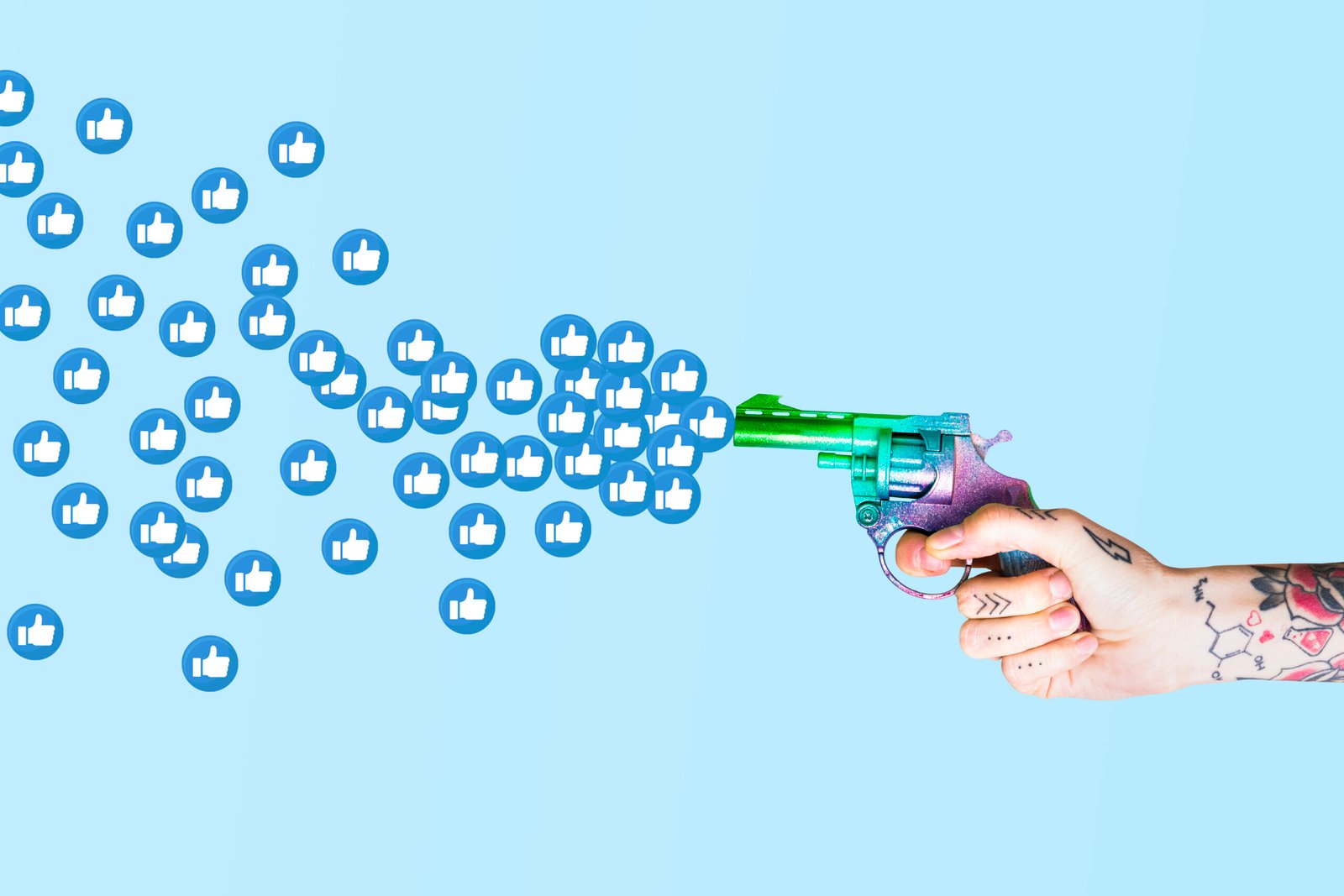Paid advertising has become an essential tool for businesses of all sizes, aiming to reach their audience more precisely and boost their brand visibility. Whether it’s through Google Ads, social media platforms like Facebook, or niche professional networks like LinkedIn, crafting an effective paid advertising strategy is crucial for long-term business success.
In this article, we will dive into the core elements of paid advertising, providing actionable tips and insights for businesses looking to supercharge their advertising efforts.
Understanding the Foundations of Paid Advertising
Why Paid Advertising Matters
Paid advertising provides businesses with the ability to reach highly targeted audiences in a scalable, measurable way. Unlike organic methods, which take time to develop traction, paid advertising delivers instant visibility. However, success is determined by how well a business leverages its strategies, budget, and advertising platforms.
Choosing the Right Ad Platforms
Selecting the right platform is the starting point of a successful advertising strategy. Different platforms serve different purposes and audiences. Here’s a breakdown:
1. Google Ads: Capturing Intent-Driven Behavior
Google Ads stands out because of its immense search volume, enabling businesses to capture users at the precise moment they’re searching for a product or service. Google Ads works particularly well for businesses looking to drive conversions with a high intent to purchase.
Pro Tip: Use long-tail keywords in Google Ads to capture high-intent customers. These are phrases with three or more words, often highly specific, leading to better-qualified traffic.
2. Facebook Ads: Targeting Based on Interests and Demographics
With over 2 billion active users, Facebook Ads offer unparalleled targeting capabilities. The platform allows businesses to create custom audiences based on interests, location, age, and even past behaviors, giving brands a broad but specific reach.
Example: A business selling eco-friendly products can use Facebook Ads to target individuals interested in sustainability, green living, and related causes, narrowing down the audience to those most likely to convert.
3. LinkedIn Ads: Reaching Professionals in B2B Markets
For businesses operating in the B2B space, LinkedIn Ads are essential. The platform allows brands to target professionals based on their industry, job title, company size, and more. This makes LinkedIn ideal for B2B lead generation.
Pro Tip: Use LinkedIn’s lead generation forms, which pre-fill information from the user’s profile, improving your chances of conversion and minimizing friction.
Matching Platforms with Your Advertising Goals
The key to success is matching your advertising goals with the right platform. For example, use Google Ads for intent-driven actions like purchasing, Facebook Ads for broad audience engagement, and LinkedIn Ads for professional targeting. Evaluate where your audience spends their time and match the platform with your campaign goals, whether it’s increasing brand awareness, driving traffic, or converting leads.
Crafting Compelling Ad Copy and Design
The effectiveness of any paid advertising campaign lies in its ad copy and design. Both elements must work together to convey the right message, grab attention, and inspire action.
Principles of Persuasive Ad Copywriting
- Audience-Centric: Speak directly to your audience’s needs and pain points.
- Clear and Concise: Don’t overwhelm with too much information.
- Benefit-Focused: Highlight the value proposition – how does your product/service improve their life?
- Dynamic and Engaging: Use power words and emotional triggers.
- Call-to-Action (CTA): A strong, action-driven CTA like “Shop Now” or “Get Started” increases engagement.
Pro Tip: A/B test your ad copy. Run different versions to see which resonates more with your audience. Change the CTA, headlines, or benefit focus to see which gets the most clicks or conversions.
Creating Eye-Catching Visual Design
Ad visuals are as important as the copy. Visuals should be:
- Brand-Aligned: Consistency in color, font, and style.
- Attention-Grabbing: High-quality images or compelling video.
- Action-Oriented: Use visuals that guide the eye to the CTA.
Example: In Facebook Ads, using carousel ads (multiple images) can drive better engagement compared to a single static image, as it allows users to interact with different facets of the product.
Keyword Research and Bidding Essentials
Keyword research is the backbone of a successful paid advertising strategy, especially for search platforms like Google Ads. It ensures that your ads are shown to the right people who are actively searching for your products or services.
The Importance of Keyword Research
Effective keyword research is not just about generating traffic but qualified traffic. By understanding the specific keywords your target audience is using, you can create ads that speak directly to their needs and increase the likelihood of conversions.
Pro Tip: Use tools like Google Keyword Planner or SEMrush to find relevant keywords and phrases your audience uses. Focus on a mix of broad, phrase match, and exact match keywords for a balanced approach.
Strategies for Competitive Bidding
Bidding too high can exhaust your budget, while bidding too low may prevent your ad from being seen. It’s crucial to find a balance.
- Automated Bidding: Google Ads offers automated bidding strategies like Maximize Clicks or Target CPA, which adjust your bids in real-time to achieve your goals.
- Quality Score: Google’s quality score (based on relevance, landing page experience, and CTR) affects both your ad position and cost-per-click (CPC). The higher your quality score, the lower your CPC.
Pro Tip: For businesses with a seasonal offering, adjust your bids to align with peak buying seasons to maximize efficiency.
Structuring Campaigns and Ad Groups for Maximum Impact
Organizing your ad campaigns is vital for optimizing performance and budget allocation. A well-structured campaign allows for easier management, better targeting, and higher relevance.
Ad Grouping for Enhanced Relevance
Grouping ads by theme or product type increases relevance and improves your ad quality score. For example, if you sell outdoor gear, create separate ad groups for hiking gear, camping equipment, and backpacking essentials, each with tailored keywords and ad copy.
Pro Tip: Include negative keywords to prevent your ad from showing in irrelevant searches. For instance, a luxury brand might add “cheap” as a negative keyword to avoid appearing in price-sensitive searches.
Customizing Ad Groups for Target Segments
To maximize impact, tailor your ad groups to specific audience segments:
- Demographic Segmentation: Customize ad groups for age, gender, or income level.
- Behavioral Segmentation: Segment users by browsing history, past purchases, or other online behaviors.
- Geographic Segmentation: Target users by region or location to ensure relevance in local markets.
Advanced Conversion Tracking and Analytics
To make the most of paid advertising, you need to measure performance accurately. Using advanced conversion tracking and data analytics, businesses can monitor their ad effectiveness and optimize campaigns in real-time.
Importance of Conversion Tracking
Tracking conversions (e.g., purchases, form submissions, downloads) allows businesses to see what’s working and what’s not. This data is essential for making informed decisions about budget allocation, targeting, and ad optimizations.
Pro Tip: Set up Google Analytics Goals to track custom actions taken on your site after users click on an ad. These could be as specific as product purchases or as broad as time spent on a page.
Analyzing Key Metrics for Success
Key performance indicators (KPIs) you should monitor include:
- Click-through rate (CTR): Measures how often people click on your ad after seeing it.
- Conversion rate: Percentage of users who complete a desired action.
- Cost per acquisition (CPA): The amount spent to acquire a customer.
- Return on ad spend (ROAS): Revenue generated for every dollar spent on advertising.
By understanding these metrics, businesses can optimize for higher ROI and continuously improve their paid advertising strategy.
Remarketing Strategies for Continued Engagement
Remarketing (or retargeting) is one of the most powerful strategies in paid advertising. It allows you to re-engage users who have shown interest in your product or service by visiting your website or clicking on a previous ad.
How Remarketing Works
Remarketing involves displaying ads to people who have previously visited your site, reminding them of the product or service they browsed but didn’t purchase.
Example: A user visits an e-commerce site and adds items to their cart but leaves without completing the purchase. A remarketing ad can show those items again on Facebook or Google Display Network, prompting them to return and finish the transaction.
Pro Tip: Use dynamic remarketing to show personalized ads featuring the specific products users viewed on your site.
Conclusion
Crafting a successful paid advertising strategy requires a combination of audience insights, platform knowledge, compelling content, and continuous optimization. Whether you are a small business or a large enterprise, following these paid advertising strategies can significantly uplift your brand’s visibility and drive real results.
By continually refining your approach—through proper keyword research, platform selection, ad optimization, and remarketing efforts—your business can build a sustainable and impactful paid advertising strategy that delivers a strong ROI.




